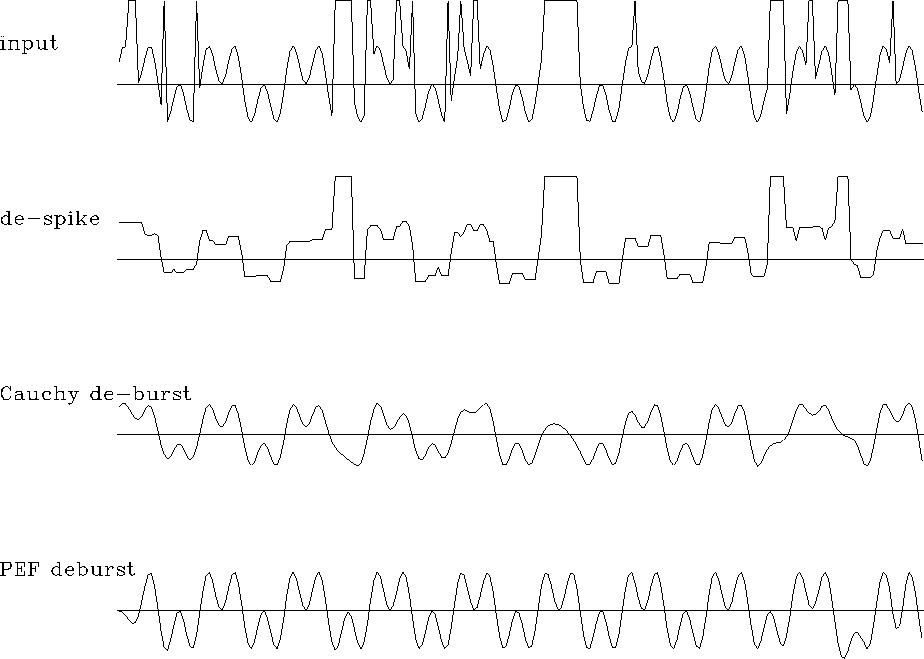![[*]](http://sepwww.stanford.edu/latex2html/cross_ref_motif.gif) .
There we identified defective data by its lack
of continuity. We used the fitting equations
.
There we identified defective data by its lack
of continuity. We used the fitting equations
We can use the same technique to throw out fitting equations
from defective data that we use for missing data.
Recall the theory and discussion leading up to
Figure ![[*]](http://sepwww.stanford.edu/latex2html/cross_ref_motif.gif) .
There we identified defective data by its lack
of continuity. We used the fitting equations
.
There we identified defective data by its lack
of continuity. We used the fitting equations
![]() where the weights wi were chosen
to be approximately the inverse
to the residual (yi+1 -2yi + yi-1) itself.
where the weights wi were chosen
to be approximately the inverse
to the residual (yi+1 -2yi + yi-1) itself.
Here we will first use the second derivative (Laplacian in 1-D) to throw out bad points, while we determine the PEF. Having the PEF, we use it to fill in the missing data.
module pefest { # Estimate a PEF avoiding zeros and bursty noise on input.
use quantile_mod
use helicon
use misinput
use pef
contains
subroutine pefest1 (niter, yy, aa, lag, mx) {
integer, intent (in) :: niter
real, dimension (:), pointer :: yy, aa
integer, dimension (:), pointer :: lag
logical, dimension (:), pointer :: mx
real, dimension (size (yy)) :: rr, yfre
real :: rbar
integer :: stat
call helicon_init (aa, lag) # starting guess
stat = helicon_lop (.false., .false., yy, rr)
rbar = quantile( size( yy)/3, abs( rr)) # rbar=(r safe below rbar)
where( yy == 0. .or. abs( rr) > 5 * rbar)
yfre = 0. # risky
elsewhere
yfre = 1. # safe enuf
where (mx) yy = 0.
call find_mask( yfre, aa, lag, mx)
call find_pef( yy, aa, lag, mx, niter)
}
}
The result of this ``PEF-deburst'' processing is shown in Figure 6.
 |
Given the PEF that comes out of pefest1(), subroutine
fixbad1() below convolves it with the data and looks for
anomalous large outputs. For each that is found, the input data is
declared defective and set to zero. Then subroutine mis1()
![[*]](http://sepwww.stanford.edu/latex2html/cross_ref_motif.gif) is invoked to replace the zeroed values by
reasonable ones.
is invoked to replace the zeroed values by
reasonable ones.
module fixbad { # Given a PEF, find bad data and restore it.
use mis2
use quantile_mod
use helicon
contains
subroutine fixbad1 (niter, aa, lag, yy) {
integer, intent (in) :: niter
real, dimension (:), pointer :: aa
integer, dimension (:), pointer :: lag
real, dimension (:) :: yy
real, dimension (size (yy)) :: rr
logical, dimension (size (yy)) :: known
integer :: stat
call helicon_init (aa, lag)
stat = helicon_lop (.false., .false., yy, rr); rr = abs (rr)
known = ( yy > 0.) .and. ( rr < 4. * quantile( size(rr)/2, rr))
call mis1 (niter, yy, aa, lag, known, .true., .true.)
}
}